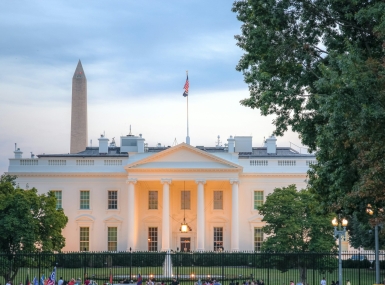Federal Communications Commission (FCC) updates National Broadband Map to reflect resolved challenges
Author

Maxx Silvan

Seamus Dowdall
Upcoming Events
Related News

Key Takeaways
On May 30, the Federal Communications Commission (FCC) released an update to its National Broadband Map that includes corrections made through the agency’s challenge process. Initially released last November, the map is a comprehensive, location-by-location view of high-speed Internet availability across the nation. It provides a more detailed and precise reflection of the availability of fixed and mobile broadband services in all 3,069 counties, parishes and boroughs.
The updated map can be accessed here.
This second version of the National Broadband Map included a net increase in over 1 million new locations from the original map, with locations added and removed in all 50 states. Since the National Broadband Map’s debut last November, over 4 million broadband availability challenges were sent to internet service providers (ISPs), with a sizable proportion of those challenges submitted by dozens of county governments. Approximately 75 percent of these challenges have been resolved to date, with nearly 2.1 million challenges conceded by ISPs.
The FCC’s National Broadband Map will be instrumental in determining how federal funds will be allocated at the state level for the National Telecommunication and Information Administration’s (NTIA) Broadband, Equity, Access and Deployment (BEAD) program, which is funded by Bipartisan Infrastructure Law (BIL). In total, the BEAD program will provide over $42 billion to high-speed internet access by funding planning, infrastructure deployment and adoption programs in all 50 states and Washington D.C. NTIA has required states to conduct local coordination in order to receive these funds, and NACo encourages counties to continue coordinating with their state broadband office on the broadband accessibility needs in our communities.
NTIA has stated that this iteration of the map will be used to determine state BEAD allocations, and the agency is on track to announce these allocations by June 30. The FCC, however, will continue to accept challenges to the map on a rolling basis and update its data regularly.
Counties are encouraged to continue reviewing and validating the availability data presented on the map to determine whether to submit a challenge. If your county determines that a challenge is needed, the FCC has provided steps to follow here.
NACo will continue to work with our federal partners to ensure local coordination throughout the FCC National Broadband Map update and BEAD allocation processes.
For more NACo resources on the FCC National Broadband Map, click here.
Attachments
Related News

House committee passes local broadband permitting preemption bills
The American Broadband Deployment Act of 2025 would enact new restrictions on a variety of state and local land use and zoning authorities pertaining to the deployment of telecommunications infrastructure.

White House signs Executive Order on state AI lawmaking
President Trump signed an Executive Order (EO) aimed at mobilizing federal agencies to challenge existing state laws on artificial intelligence.
